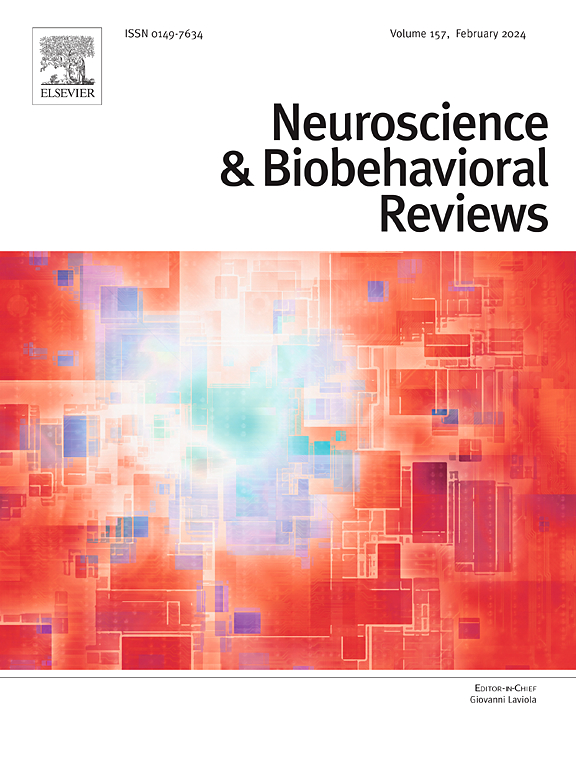Common brain areas in spatial navigation and visuo-spatial planning: A meta-analysis
IF 7.9
1区 医学
Q1 BEHAVIORAL SCIENCES
引用次数: 0
Abstract
Planning is a fundamental function of both spatial navigation and visuo-spatial tasks, supported by overlapping and distinct neural substrates that remain partially unclear. We conducted an Activation Likelihood Estimation (ALE) meta-analysis on fMRI studies examining active, goal-directed navigation and visuo-spatial planning tasks (i.e., the Tower of London paradigm). Conjunction and contrast analyses revealed a shared network encompassing bilateral frontal regions, including the superior frontal gyrus (SFG), middle frontal gyrus (MFG), anterior insula (INS), and clusters in the left supplementary motor area (SMA) and triangular part of the inferior frontal gyrus (IFGtriang). Contrast analyses highlighted greater involvement of the hippocampus (HIP) and parahippocampal gyrus (PHG) in navigation, and posterior parietal and dorsolateral prefrontal regions in visuo-spatial planning. These findings clarify the neural mechanisms underlying these processes, emphasizing shared amodal regions contributing to both visuo-spatial planning and spatial navigation. This work provides insights on the underlying deficits associated with neurodevelopmental disorders and brain injuries.
空间导航和视觉空间规划的共同脑区:一项元分析。
规划是空间导航和视觉空间任务的基本功能,由部分不清楚的重叠和不同的神经基质支持。我们对fMRI研究进行了激活似然估计(ALE)荟萃分析,研究了主动的、目标导向的导航和视觉空间规划任务(即伦敦塔范式)。结合对比分析发现,双侧额叶区域包括额上回(SFG)、额中回(MFG)、前岛(INS)以及左侧辅助运动区(SMA)和额下回三角形部分(IFGtriang)。对比分析强调海马(HIP)和海马旁回(PHG)参与导航,后顶叶和背外侧前额叶区域参与视觉空间规划。这些发现阐明了这些过程背后的神经机制,强调了共享模态区域对视觉空间规划和空间导航的贡献。这项工作提供了与神经发育障碍和脑损伤相关的潜在缺陷的见解。
本文章由计算机程序翻译,如有差异,请以英文原文为准。
求助全文
约1分钟内获得全文
求助全文
来源期刊
CiteScore
14.20
自引率
3.70%
发文量
466
审稿时长
6 months
期刊介绍:
The official journal of the International Behavioral Neuroscience Society publishes original and significant review articles that explore the intersection between neuroscience and the study of psychological processes and behavior. The journal also welcomes articles that primarily focus on psychological processes and behavior, as long as they have relevance to one or more areas of neuroscience.

 求助内容:
求助内容: 应助结果提醒方式:
应助结果提醒方式:


